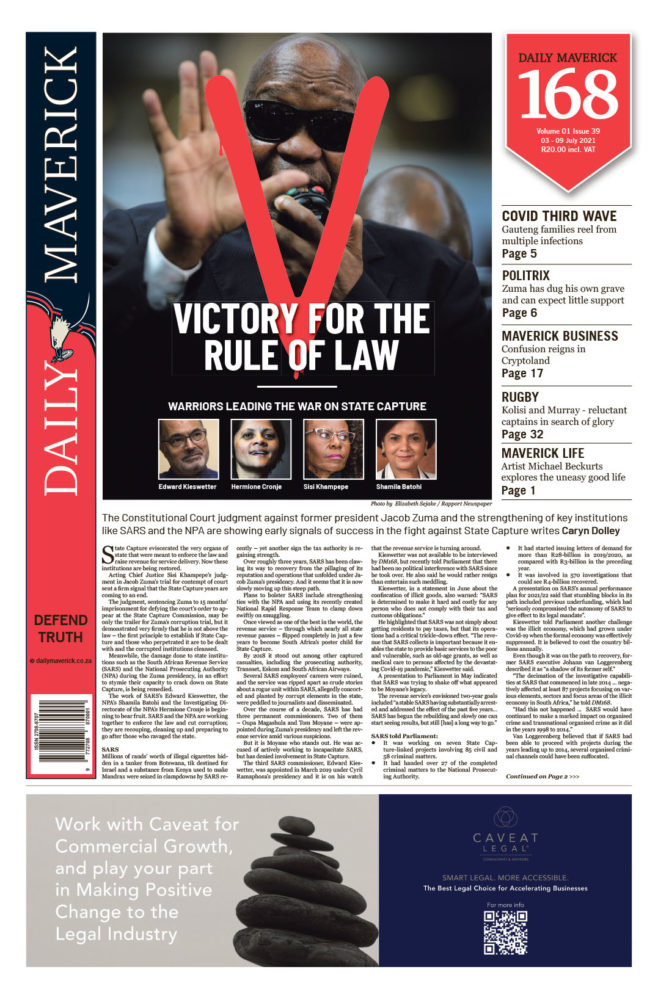First published in the Daily Maverick 168 weekly newspaper.
Compromised record-keeping at provincial hospitals, a legal system ill-equipped to deal with medical negligence claims, and the absence of legislation that regulates legal claims in the medical field just compound existing problems in the sector. As a result, the country’s nine provincial health departments are facing medical malpractice suits that run well beyond their ability to settle them.
But perhaps there is a ray of sunlight on the horizon.
Recently the Actuarial Society of South Africa stepped into the fray, commissioning research into what is driving the malpractice suits into the stratosphere. Lusani Mulaudzi, president of the society, believes actuaries can partner with the government to solve – or limit – this problem. He is a public interest actuary, which means he believes in using his science (solving problems using the application of mathematical and statistical methods) for the common good.
The society commissioned the research into medical malpractice claims from actuary and damages expert Gregory Whittaker. He says medical negligence has cost the country’s nine provincial health departments close to R10-billion over the past seven years. Since April last year, the Eastern Cape Department of Health alone paid about R870-million. More taxpayer monies that could have contributed to improving lives. But let’s not go there.
The adage that you can’t manage what you don’t measure is applicable here. The research shows that the majority of claims paid were for medical negligence that resulted in cerebral palsy – a neurological disorder caused by damage to an infant’s developing brain that permanently affects body movement and muscle co-ordination.Given the number of cases involving cerebral palsy (CP), Whittaker did a deep dive into hundreds of applicable court judgments to identify the common denominators in the successful CP claims.
Before I get to what he learned, it’s important to say that for close to a century the majority of CP cases were believed to be caused by oxygen deprivation before or during labour. This thinking was challenged when medical interventions like electronic foetal monitoring and caesarean sections reduced the number of stillbirths and infant deaths. Yet CP prevalence rates remained constant.
Oxygen deprivation plays a role, but it is now widely accepted that CP is often caused by a number of sequential factors rather than a single cause. Maternal obesity, maternal alcohol consumption, smoking, maternal infections and birth weight can contribute. It is relevant that contributory negligence was not argued in the matters analysed by Whittacker despite the multitude of risk factors that could have contributed.
For instance, babies born weighing less than 2.5kg have a greater chance of having CP than others. Yet Whittaker points out that, of 81 cerebral palsy judgments, 59 did not refer to birth weight. The lack of consideration of these factors is alarming. “If contributory negligence of 10% can be proven in respect of each plaintiff, for example, the state would save hundreds of millions of rand in claims payments,” he says.
Solving this problem does not require an overhaul of the entire public health system, though that is needed. According to the report, an examination of the placenta within 24 hours of birth can accurately reveal the causes of abnormalities in a newborn. Unfortunately, there are no national guidelines for the post-birth examination of placentas. In addition, SA has a dire shortage of specialised pathologists with experience in this area – the majority practise in the private sector. Given the scale of malpractice claims, this strikes me as a worthwhile investment to make.
Another easily implementable recommendation is for the national Department of Health to create a centralised database for monitoring CP claimants to build up accurate life expectancy data. This data would better inform future claims values.
Here is a scary number: at the end of March 2020, the National Treasury’s contingent liability was R111.5-billion for medicolegal claims against provincial departments of health. This represents almost half of the country’s total health budget. Almost half. How has this problem been allowed to get so out of control?
Rather than hand-wringing, Whittaker strongly recommends the department establish a medicolegal unit to create a uniform statistical reporting system for medical malpractice claims. It would improve patient safety and help to understand the performance of the medical liability system.
Another area is legislation. South Africa has no legislation regulating legal claims in the medical field. This requires urgent attention, given the negative impact that medical malpractice claims have on the public purse. Whittaker adds that the addition of specialist medical malpractice courts could lend support to this legislation. This would complement other specialist courts such as the Labour Court, the Competition Appeal Court, the Land Claims Court and the highly successful but on-again-off-again Sexual Offences Court. Using medically trained judges would ensure that judgments are based on sound medical and scientific principles.
Health professionals make life-and-death decisions every day, and sometimes these lead to undesirable outcomes. In such cases, a devastated family has the right to just and reasonable compensation – and to know what went wrong, who was responsible, and what is being done to prevent future negligence. A properly regulated medical malpractice system would incentivise healthcare professionals to act with reasonable care while at the same time safeguarding the system from those who seek opportunity from sadness. DM168
This story first appeared in our weekly Daily Maverick 168 newspaper which is available for free to Pick n Pay Smart Shoppers at these Pick n Pay stores.

















 Become an Insider
Become an Insider
Comments - Please login in order to comment.